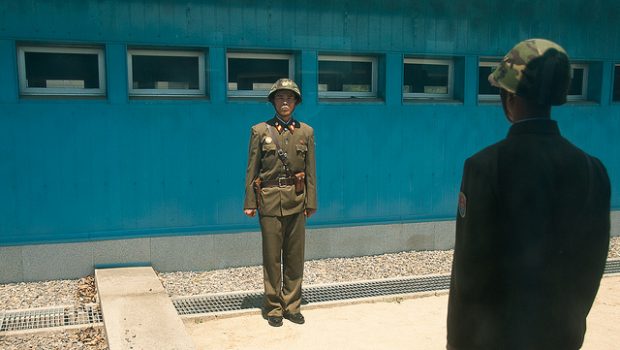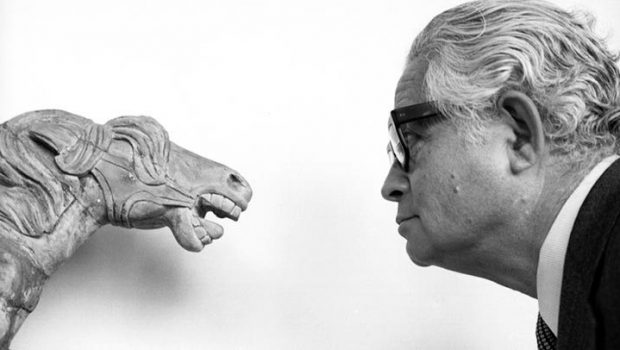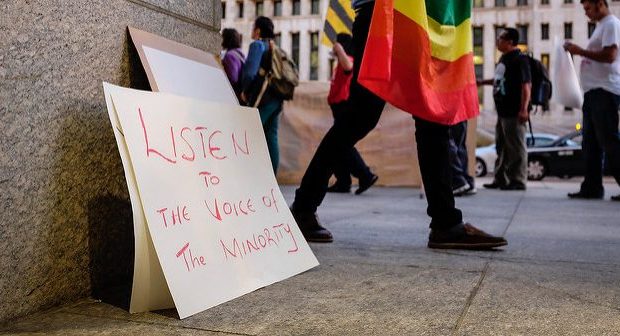The Two Koreas
Hélène Dieck
Can we expect the end of the threat of a nuclear war between the two Koreas ?
One month after ripping apart the Obama-era nuclear deal with Iran, President Trump is attempting to strike a similar deal with North Korea.
The North and South of the Korean peninsula have been at war since 1950. After 3 years of militarized conflict, the two countries have signed an armistice and divided the Peninsula along the 38th parallel. The North became a communist and authoritative regime, while the South is a democracy backed by the U.S., which has a strong military presence in the country. Since the armistice, Pyongyang has hoped for a nuclear weapon to seize the advantage against its neighbor.
North Korea’s nuclear ambitions first caught the attention of the International Atomic Energy Agency (IAEA) in 1992, when the North Korea failed to declare its nuclear programs. North Korea then withdrew from the IAEA. The United Stated succeeded in keeping the country in the Non-Proliferation Treaty (NPT) for a time, negotiating the Agreed Framework. This agreement led to North Korea freezing its nuclear activities and giving access to IAEA inspectors in exchange for American light water reactors and other energy capabilities. North Korea broke the agreement in 2002 and withdrew from the NPT the following year.
The Korean peninsula conflict is one of the longest open conflict in modern history, having the potential of triggering a third world war because of each side’s respective alliances. Many times before the international community hoped for a final peace treaty between the two rivals. However previous attempts have failed. The breakthrough in Korean relations started with Kim Jong un’s New Year’s address, calling for easing of military tensions with its neighbor. The South seized the opportunity with the 2018 Winter Olympics in Pyeongchang, where South Korean and North Korean athletes opened the Games with a common flag showing a unified Korean peninsula. Kim Yo-jong, sister of the North Korean leader, then watched a performance seated next to the South Korean President. Following this major event, the two Korean presidents met at the demilitarized zone last month and promised to formally end the Korean War by the end of the year. Pyongyang also committed to dismantle its nuclear weapon test facility before May 25th, ahead of the June 12th U.S.- North Korea summit in Singapore.
North Korea did commit to freezing further nuclear testing and dismantling its nuclear testing facility, but Kim Jong un is far from agreeing to give up his nuclear weapons. Indeed, the nuclear weapon is according to him the only defense against South Korea. Stopping further testing is not a major concession, since the North Korean leader already stated that the development of the weapon has been accomplished. Although there is no independent confirmation of his assertion, North Korea already proceeded with 6 nuclear tests, the same number of tests as India and Pakistan in the nineties for instance, which are known nuclear powers. However the U.S., through its Secretary of State, Mike Pompeo, already agreed to lift all economic sanctions if the North gave up all its nuclear weapons. Mike Pompeo met with North Korean leader twice since then, negotiating the release of American prisoners prior to any summit.
These cordial negotiations are a clear departure from the hostile rhetoric exchanged last year. For instance, Donald Trump responded to the last Kim Jong un’s nuclear test saying that the U.S. would respond to an attack with “fire and fury like the world has never seen”. While President Trump is trying to take all the credit, the recent North Korean opening is due to South Korean President Moon Jae-in’s diplomatic offense. Indeed, this belligerent rhetoric and Trump’s impulsive personality were a source of worry about possible military escalation. In parallel, the economic sanctions against North Korea championed by the U.S. led to a major economic downturn in the country, especially with China’s support. These domestic difficulties are the major driver explaining Kim Jung un’s willingness to negotiate with the United States.
Although the date of the U.S.- Korean negotiations was already set and the North released American prisoners as a good gesture, Pyongyang is now taking the pretext of U.S.- South Korea military exercise to back down from the negotiations, despite the exercise being an annual occurrence. The last peace negotiations between the North and the South occurred in 2007 and ended with Pyongyang launching a satellite, after having received $4.5 billion of aid. Today the U.S. already downsized its military exercise with South Korea and paused its efforts to increase sanctions in order to give diplomacy a chance. China’s workers and goods are already flowing again over the North Korean border. U.S. backed South Korean military threats have subsided and it is clear now that North Korea has the upper hand ahead of the June 12th Trump-Kim talks.
*Cover Image by Groucho. The blue houses exactly on the border where North and South Korea used to have weekly meetings. The concrete curbstone on the right is the border.
 Hélène Dieck received her PhD from Sciences Po, Paris, France. She was previously responsible for elaborating military doctrine at the French Ministry of Defense and served as a visiting researcher at the RAND Corporation, Washington, DC. She currently works as a migrant welfare specialist at Qatar Foundation and recently publishedThe Influence of Public Opinion on Post Cold War U.S. Military Interventions (Palgrave, 2015).
Hélène Dieck received her PhD from Sciences Po, Paris, France. She was previously responsible for elaborating military doctrine at the French Ministry of Defense and served as a visiting researcher at the RAND Corporation, Washington, DC. She currently works as a migrant welfare specialist at Qatar Foundation and recently publishedThe Influence of Public Opinion on Post Cold War U.S. Military Interventions (Palgrave, 2015).
©LiteralPublishing
Posted: May 23, 2018 at 10:47 pm




![[ CHICA MUERTA SE TOMA UN DESCANSO ]](https://literalmagazine.com/assets/download-1-1-e1650598518503.jpeg)





